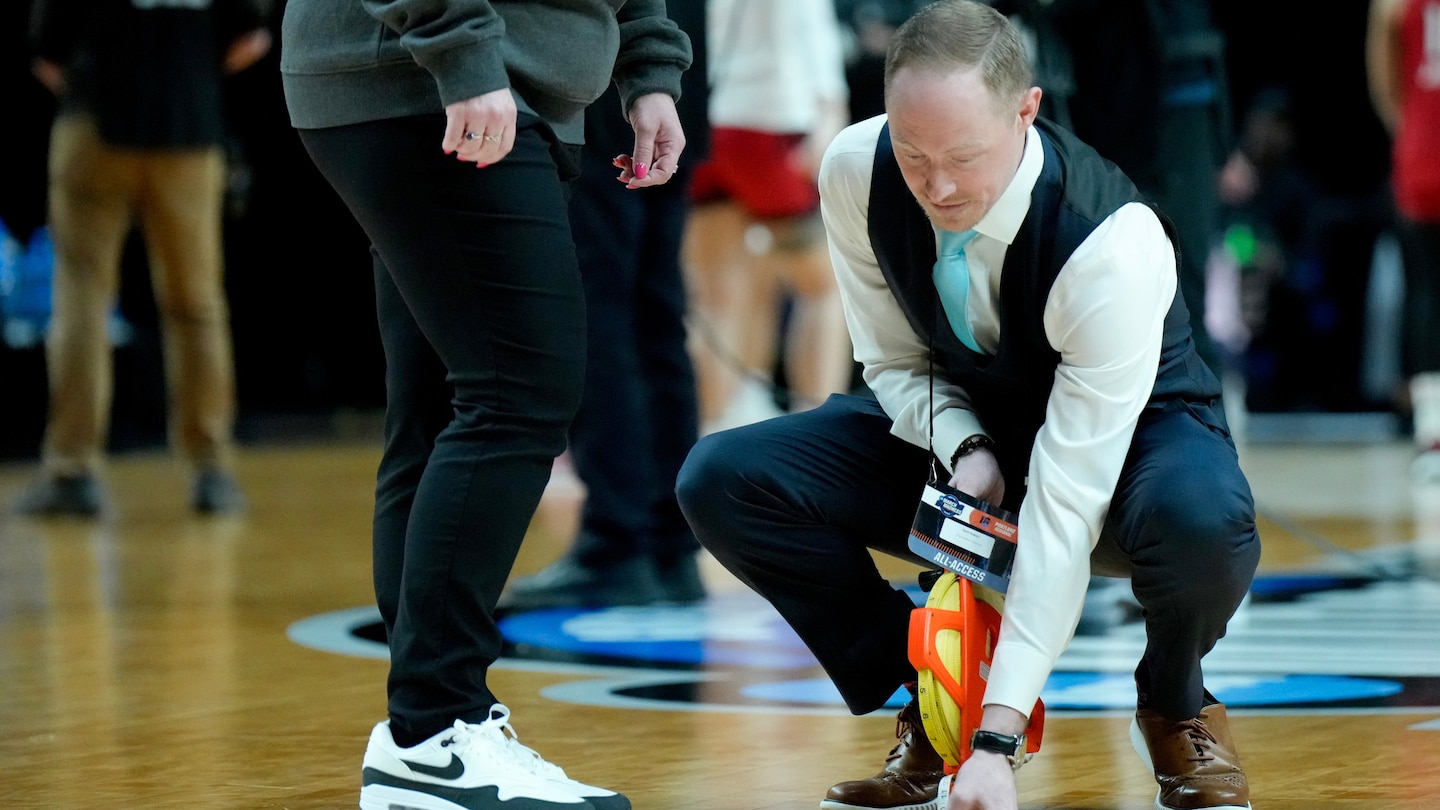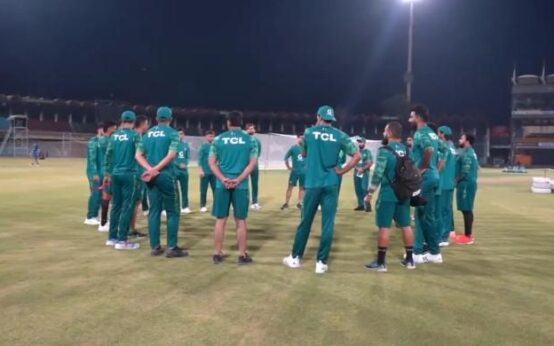“I hate to say this,” Texas Coach Vic Schaefer said afterward, “but I have a lot of colleagues who would say, ‘Only in women’s basketball.’ It’s a shame, really, that it even happened.”
What a debacle. What a humiliating televised spectacle, as North Carolina State’s Wes Moore and Texas’s Schaefer walked off distances in their loafers and squinted at those three-point arcs that didn’t match. Imagine Dan Hurley’s reaction in such a situation. Both women’s coaches were politic afterward, as the good and patient people in this game always are, reluctant to hurt the event they’ve built with so little help. Five games were played on that court, and there is no replaying them. But of course it mattered. It mattered reputationally, it mattered competitively and it was an inexcusable injustice to everyone concerned.
And it was just the latest instance of bureaucratic haplessness. A ref named Tommi Paris had to be peeled off an early-stage game between N.C. State and Chattanooga when it was discovered late that she had a conflict — namely, she received a degree from Chattanooga. Utah was housed fully 30 miles from its Spokane, Wash. competition site in Coeur D’Alene, Idaho — notorious as the longtime home of the Aryan Nations. Surprise: Players were accosted by revving pickup truckers yelling racial slurs at them and had to be moved for safety. Notre Dame’s Hannah Hidalgo was benched by a martinet ref in the Sweet 16 for more than four minutes, ordered to remove a diamond stud in her nose that she had worn all season without penalty, including in the earlier rounds.
Even now, these things keep happening. Even now, when the NCAA knew this tournament would be watched to an unprecedented degree by record large audiences with newfound passion. The question of how such a thing as the court foul-up could happen remains to be answered in terms of specifics — the names of the corner cutters at Connor Sports, the company that makes, ships and installs the NCAA’s logoed tournament courts, who did such shabby, inattentive work. But the larger culpability is obvious from the passivity of the NCAA’s statement when it was discovered.
“The NCAA was notified today that the three-point lines on the court at Moda Center in Portland are not the same distance,” the organization’s statement read. “The court will be corrected before tomorrow’s game in Portland. The NCAA regrets the error was not discovered sooner.”
Notified? Wasn’t it the NCAA’s job to notice, rather than be notified?
That shoddily painted court unquestionably warped players’ shooting perspectives and hurt their efficiency. According to the NCAA, across five games on that court, teams shot just 26 percent from the three-point line that was too shallow, compared with 33 percent from the standard three-point line. A seven-percentage point advantage from the three? That’s a massive difference. And it almost unquestionably affected final scores.
Think about it. What effect did it have on momentum, the dynamic shifts in the games? Timing mattered. A team that had to play offense on the suboptimal end in the second half was at a serious, quantifiable disadvantage. Holding a lead or completing a comeback was undeniably tougher, and such a difference in a close game is a chasm.
In the Sweet 16, Stanford led N.C. State by 10 after the first half, playing offense on the accurate end of the floor. In the second half, Stanford made just two of 13 attempts from behind that shallow, misdrawn arc. Meanwhile the Wolfpack surged, hitting 50 percent from the good arc. Take nothing away from the Wolfpack; they earned the victory. But the circumstances befouled the result, and that was unfair to all.
“Who knows how much it could impact a team?” Stanford Coach Tara VanDerveer wrote in an email, replying to a query. “You miss shots, people get frustrated, etc. Either way, it is shoddy workmanship and a lack of accountability. When you go to the gym you trust that the lines are correct and the basket is at the right height. Not a good look.”
Officiating in the women’s game remains inferior. Some of the regional sites and accommodations are less than ideal. Obviously, the oversight in Portland was deficient. All of which raises the question of what else is deficient and inferior in the treatment of the women’s tournament. In 2021, attorney Roberta Kaplan and her Kaplan Hecker & Fink LLP law firm produced a review of the NCAA’s gender inequities after it was embarrassingly revealed how badly the organization second-classed the women’s event. The report found “men’s basketball is prioritized over women’s basketball” and “in practice and perception, women’s basketball essentially reports to and is subordinate to men’s basketball.”
You’d have thought the NCAA would have found an equal focus by now. But you have to wonder. Is the NCAA’s new $920 million, eight-year agreement with ESPN really the best it could do, bundling the women’s tournament with 40 sports? The deal was made during ESPN’s exclusive negotiating window and there was never open bidding. The NCAA claimed there was some hidden market weakness. Was there? Really? More people watched LSU and South Carolina play a regular season game in January, 1.56 million, than the NBA on TNT the same night. Iowa’s second-round victory over West Virginia commanded an audience of 4.9 million.
It’s long past time for the NCAA to take some self-accountability and fix the disregarded, underfunded system that creates such amateur hour errors around an event that is becoming one of its most valuable and prestigious. Otherwise, when the next media contract comes around, the women’s coaches and athletic directors should stage a revolt and do what football did when it deemed the NCAA commercially incompetent and restrictive: Bolt the organization entirely.


 Best Underground Water Leak Detection Equipment 2024
Best Underground Water Leak Detection Equipment 2024  Best Backyard Ideas: Turn Your Outdoor Area Into a Creative and Calm Haven
Best Backyard Ideas: Turn Your Outdoor Area Into a Creative and Calm Haven  Babar, Rizwan are good players but not whole team, says Mohammad Hafeez
Babar, Rizwan are good players but not whole team, says Mohammad Hafeez  Pak vs NZ: Green Shirts aim to bounce back against Kiwis today
Pak vs NZ: Green Shirts aim to bounce back against Kiwis today